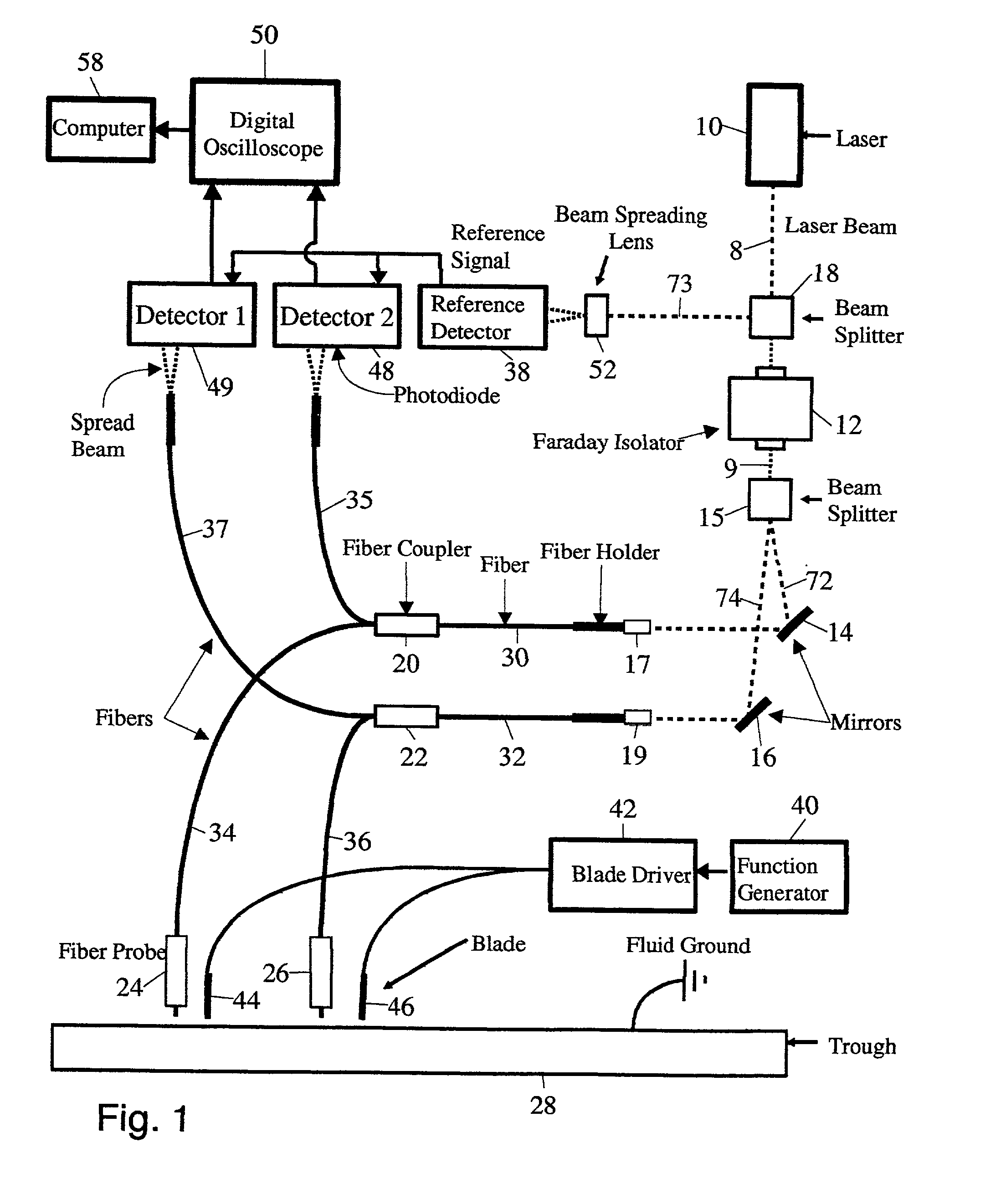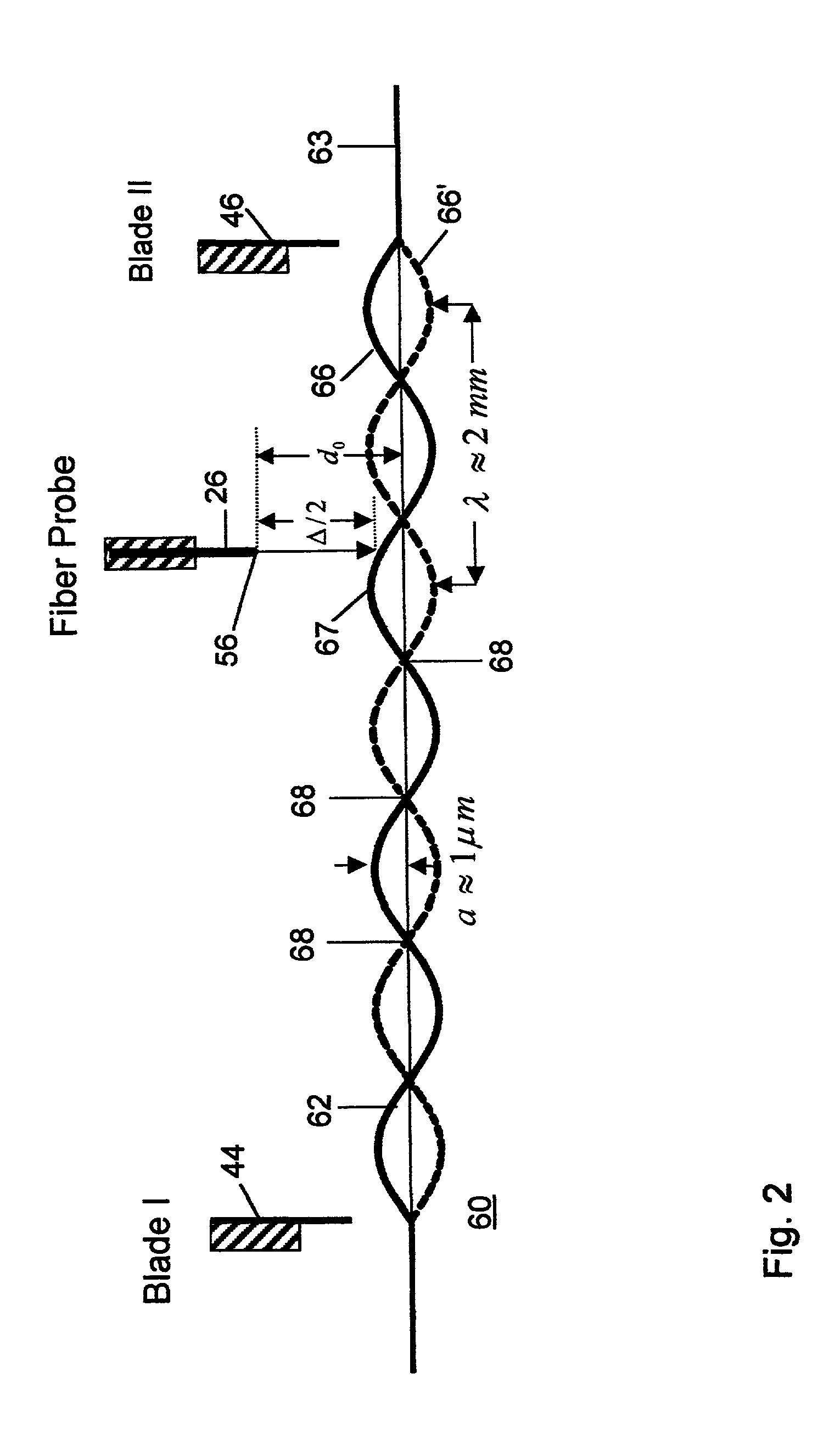Apparatus and method for measurement of fluid viscosity
a fluid viscosity and apparatus technology, applied in the field of apparatus and method for measuring fluid viscosity, can solve the problems of two wave trains affecting the outer side of the blade, no reliable method available to date,
- Summary
- Abstract
- Description
- Claims
- Application Information
AI Technical Summary
Problems solved by technology
Method used
Image
Examples
Embodiment Construction
[0062] The invention system has been employed to determine the kinematic viscosity of pure water over temperature to demonstrate the utility and accuracy of the system by comparing data published in the CRC Handbook of Chemistry and Physics (CRC, Cleveland, Ohio, 1999) with the empirical data provided by this invention apparatus and method. FIG. 8 gives our measured values of the kinematic viscosity, .eta. / .rho., vs. the temperature for pure water. The solid line in the figure is a second order polynomial fit to the published data for pure water and is included for comparison. Since water has a very small viscosity to begin with, measuring the temperature variation of its viscosity constitutes a severe test of our method. The excellent results presented in FIG. 8 show that the non-contact method described provides a sensitive new alternative to flow viscometry. Furthermore, the non-contact nature of the method provides another clear advantage by eliminating the possibility of contam...
PUM
| Property | Measurement | Unit |
|---|---|---|
| frequency | aaaaa | aaaaa |
| wavelength | aaaaa | aaaaa |
| voltage | aaaaa | aaaaa |
Abstract
Description
Claims
Application Information
 Login to View More
Login to View More - R&D
- Intellectual Property
- Life Sciences
- Materials
- Tech Scout
- Unparalleled Data Quality
- Higher Quality Content
- 60% Fewer Hallucinations
Browse by: Latest US Patents, China's latest patents, Technical Efficacy Thesaurus, Application Domain, Technology Topic, Popular Technical Reports.
© 2025 PatSnap. All rights reserved.Legal|Privacy policy|Modern Slavery Act Transparency Statement|Sitemap|About US| Contact US: help@patsnap.com



